How to use stainless corrugated pipes for heating
At the word heating, those who live in high-rise buildings immediately represent cast-iron radiators and smooth pipes that fit them from the riser. If someone has an autonomous heating system installed at home, in this case there may be metal-plastic and polypropylene ones. In this article we will talk about other pipelines - corrugated stainless steel, which are so far undeservedly ignored by consumers. At the same time, they are often used for gas and cold water.

Corrugated pipes
Before we talk about what constitutes a stainless corrugated pipe for heating, let's find out what kind of pipes of this format are used in heating systems. To do this, they will be divided into groups according to the material of manufacture:
| Cast iron | In this section, only one representative - ribbed heating pipes, which can often be seen in industrial buildings and production shops.
Although their main task is to act as heaters, they can also be heat exchangers, which are installed to extract excess heat from furnace gases. |
| Black steel | In this case, the convector of the heating system can be rather arbitrarily called a ribbed tube, since the fins are not made with it, but pressed on it. Cross plates are needed to increase heat transfer. The heater can be closed in front with a decorative screen, and from above manufacturers can place an adjustable damper, with which heat output is increased or reduced. |
| Stainless steel | The material has recently appeared on our shelves. The wall thickness of the products is small, which provides their flexibility, at the same time, the strength of the stainless steel does not cause anyone to doubt, as well as a wide range of operating pressures and temperatures. The minimum bending radius is the diameter of the pipe. |
Another member of the family is a flexible corrugated plastic pipe for heating. Of course, it is not used to supply hot coolant to the radiators, because it has low mechanical strength, and the wall is of small thickness. It is used to protect metal-polymer and polymer pipelines when installing into a wall or laying in a screed.
Tip: using plastic corrugated pipes for heating can reduce non-target heat loss.
Naturally, it does not replace the real insulation. Therefore, if you need it, use polyethylene foam or polyurethane foam shells.
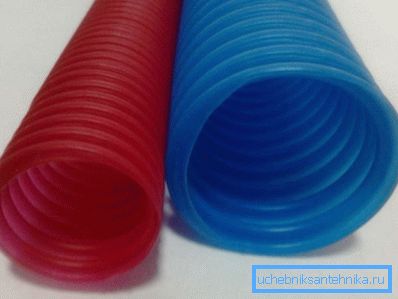
Installation
Apart from the appearance, in terms of the design of the heating system, it does not differ from the installation of metal-plastic pipelines, which are connected using various fittings. Therefore, you can easily mount it with your own hands, although they are connected in another way.
Tip: in this case, use fittings for pipes without a fitting, compressing the outside of the pipe with a gasket made of high-temperature silicone.
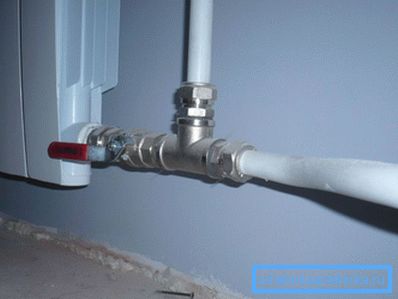
The following is a fairly simple assembly instructions:
- Take a special cutter and cut the pipeline in place. Do not be stingy to buy it, as the cost of it will pay off, due to comfortable and accurate work.
- Insert the pipe end into the fitting.
- Prepare a pipe spanner or gas wrench with which to tighten the nut on the fitting. Due to this, the gasket will be able to compress the pipe tightly, because of which the connection will become tight, and the corrugation will provide strength. It is unlikely that anyone will be able to pull this part of the liner out of the fitting.
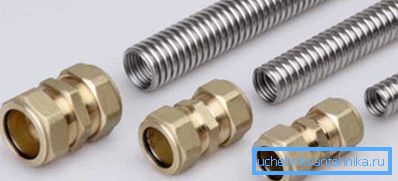
Positive qualities of the product
Consider them in more detail:
- Material resistant to pressure surges, which makes it possible to apply it in the central heating system along with bimetallic radiators. Such an eyeliner will not be a weak link, unlike metal-plastic.
- Stainless steel does not react to chemicals and does not form electroplating fumes with copper or aluminum. Therefore, you can not be afraid if the neighbors have installed aluminum radiators or copper pipes on your common heating circuit. There will be no negative consequences.
- Installing a corrugated stainless pipe for heating is simpler in simplicity than metal-plastic with compression fittings. In addition, you will need the most simple tools - 2 gas or adjustable wrench and a pipe cutter, without which, in extreme cases, you can do. Assembly time for one connection takes up to one minute.
- The service life of the material is practically unlimited.. This is not affected by even exceeding the calculated temperature of the coolant.
You should know that the limitation of 110? С is associated only with the thermal expansion of the fitting and the pipe, as well as the heat resistance of the gaskets. In order for a stainless pipe to start to lose strength, the temperature must be about 800 ° C.
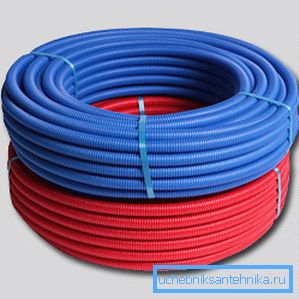
disadvantages
Like any product, the pipe has negative sides, but there are not so many of them:
- Someone may not be satisfied with her appearance. In metal products, it is much better.
- The concept of metal fatigue applies to it. Stainless steel withstands a limited amount of deformation. Therefore, access to such eyeliner should be limited, otherwise it may become unusable.
- The high price per meter, which depends on the manufacturer.
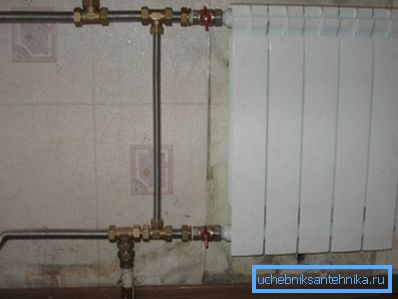
Conclusion
The emergence of new materials on the plumbing market is often met with caution, which shows the demand for corrugated pipes for heating stainless steel. At the same time, its value makes consumers think about its acquisition.
Judging by the merits of the product, it can easily become a competitor for the rest, thanks to its durability, easy installation and unlimited service life. The video in the article will help you find additional information on this topic.